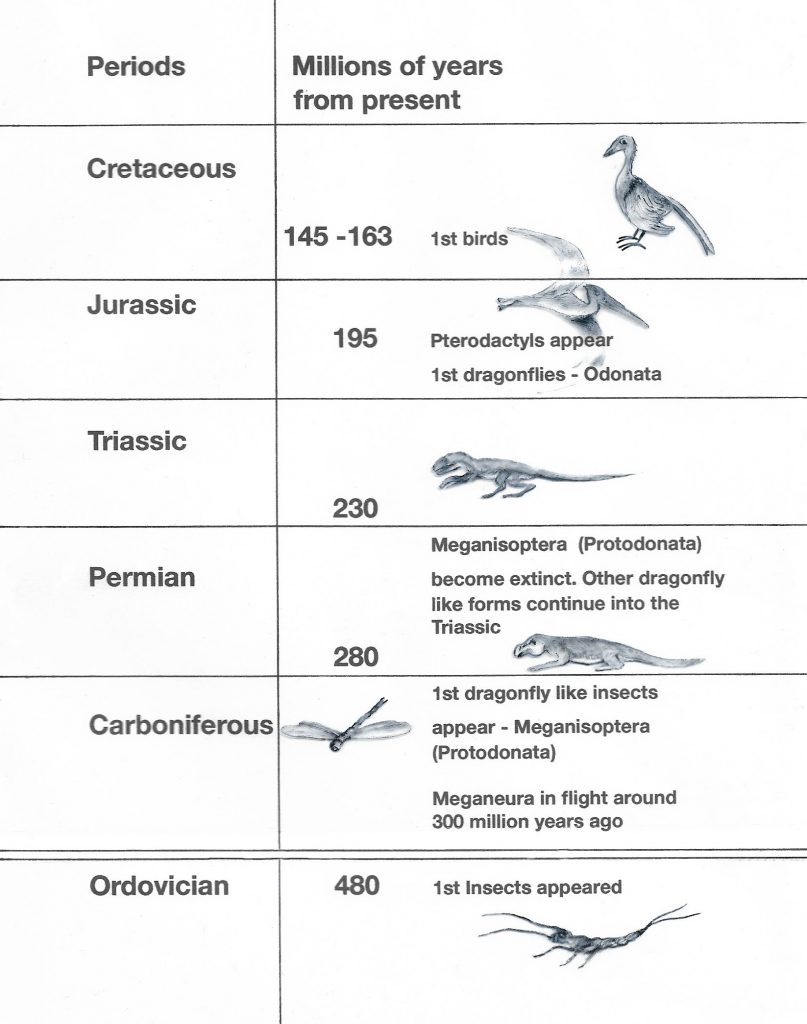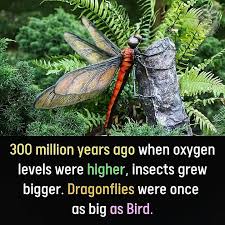Table of Contents
Introduction to Dragonflies
Dragons are not only pretty flying insects that hover around the ponds and gardens; they are old Biblical animals that have an impressive story to share. These beautiful creatures with iridescent wings and their freely moving bodies have thrilled the hearts of nature lovers for a long time. You probably have heard that dragonflies came into existence before dinosaurs ever trod the Earth; didn’t you? That’s right! Their historical evolutions can be traced back to the evolution of more than 300 million years ago which makes them to be classified among those species that exist on the earth as very old.
Today we are going to learn more about this magical creature of nature which is the dragonfly and how amazing their biology is as well as their interesting behavior and how crucial they are in the ecosystem. You might be a serious fan of insects or just like to learn more about the most interesting insects of this world, but you are welcome to be ready to open a new world of magic and be ready to immerse into the world of creatures to remember a lot. We are about to go on a ride in this truly fascinating adventure of the amazing creatures known as dragonflies!
Evolutionary History of Dragonflies

Evolution The evolutionary history of dragonflies reaches back more than 300 million years. They are believed to have appeared in the carboniferous era, which was very much earlier than the dinosaurs appeared on earth. These prehistoric bugs grew much bigger than their present counterparts, some of the species having a wingspan as large as two feet.
The fossil records indicate that dragonflies are the members of the order Odonata that has not changed much within the period of many millions of years. Such high stability points to their adaptations to different conditions.
In development, dragonflies built complicated wing structures that enable them to fly with great agility. They also differed in the ecosystems in terms of being good hunters as a result of their predatory nature.
This is manifested in the fact that their animals are adaptable to live in different environments. Today dragonflies retain their roles as important members of our natural world, whether in our quiet ponds, or busy wetlands.
Anatomy and Physical Characteristics
The factor that makes the dragonflies so attractive to nature enthusiasts is a beautiful, elaborate anatomy. Their multifaceted eyes are as large as 30,000 in number. Such an outstanding vision enables them to detect movement with spooky accuracy.
The body of a dragonfly is long and divided into segments and it is usually colored intensely, in hues of iridescent green to deep blue. They are also equally amazing about their wings; these come either clear or with patterns which facilitate their camouflage.
There are two wings that do not interact with each other thus making these insects more agile when in flight. They are able to fly at mid-air and change directions at great speed, even fly backwards which is significant in preying.
Behind their exoskeleton is a mighty musculature which allows them to move extremely fast. The strength and agility places the dragonflies in a position to be extreme predators in the insect kingdom. Besides playing some part in their survival, these unusual physical characteristics make them more enjoyable as creatures in our ecosystems.
Unique Behaviors and Adaptations
The dragonflies are spectacular because of their excellent adaptation and behaviors. Their prolonged control in hovering through the midair is one of the most amazing characters. The ability enables them to prey on their prey in flight or to escape predators easily.
Their oversized complex eyes allow almost a 360 degree vision so their chances to notice any danger as well as the prey can be increased. This helps in hunting the insects such as mosquitoes and flies in a much visualized way.
Furthermore, dragonflies have extraordinary ability to fly. They are able to dash away in super-quick manners, Zig and even back-fly which few air animals are able to do.
When it comes to mating some species are quite different and mating is accompanied with aerial acrobats. Not only are these displays attractive to mates, but this is an evolutionary tactic to guarantee reproductive success in the difficult environment. These are very complex manners that make it a fascinating experience to observe dragonflies even among nature lovers.
Importance in Ecosystems
The Dragonflies play an extremely significant role in maintaining a healthy ecosystem. They are very aggressive hunters and mosquitoes and other small insects make their staple diet. As a result of controlling such populations, dragonflies contribute to reduction of disease transmission mediated by pests.
This is an integrated environment as they are present. Employing clean water as a bioindicator of healthy ecosystems, Dragonfly larvae are healthy when found in clean water. When their numbers start to decrease, it is a common indication that there are certain environmental concerns to be taken care of.
Other than that, the flowers are also pollinated by the adults as they visit the flowers to get nectar. It enhances biodiversity in his/her growth places and helps in reproduction of the plants.
They furthermore act as food to other birds and other bigger animals, forming a crucial connection in the food web. Such dynamic keeps the ecosystems rich and diverse displaying interrelationship of the lives that exist in the ecosystem.
Cultural Significance and Symbolism
Dragon flies have been an imagination of human beings in various cultures down the ages. They are symbols of transformation and change in most traditions because of their exquisite life cycle in which they undergo metamorphosis to become splendid flyers after living in the aquatic environment as nymphs.
Dragonflies in Japan are the symbols of courage and strength. They are found in art and poetry, typically capturing the beauty of summer, which is also owing to its transience.
They are also esteemed by native American tribes. The dragonflies are considered by some people to be visitors to the spirit world or even an indication of flexibility and strength.
These insects are the symbols of lightness and joy in many folklore all over the world. Their glittering wings spell a feeling that is generations apart.
This cultural importance demonstrates an intrinsic involvement of a human being with the wonder of nature, bringing to mind a relation to all life with the symbolism and myth.
Threats to Dragonfly Populations
There is a wide variety of threats to dragonflies that endanger their population. There is a high habitat loss mainly because of urbanization and expansion of agricultural activities. Wetlands, ponds and rivers are drained or polluted and these creatures lose their breeding grounds.
Also, significant in their decline is the climatic change. Change in temperature disrupts the fine balance of ecosystems in which dragonflies thrive. Such modifications may interfere with seasons of mating and food supply.
The use of pesticides is another threat because this has polluted water bodies and decreased the number of insect prey on which a dragonfly lives. The more farmers use chemicals in farming, the more these harmless predators develop a toxic habitat.
The situation is further aggravated by the fact that invasive species compete with native insects over resources or carry diseases that can be catastrophic to the local stocks. These forces together spell a terrible picture of dragonflies all over the world.
Conservation Efforts and Research
The dragonflies are more and more being conserved as more individuals come to understand their importance in the ecosystem. People are rising to the occasion to conserve the outstanding insects with researchers and environmental organizations taking a step forward to safeguard these special insects.
One of the priorities involves recuperation of habitat. Rivers, ponds and wetlands are important breeding areas of the dragonflies. Saving these ecosystems will mean that the populations will be put at a number.
Citizen science is also important. Enthusiasts are involved in watching sightings and population monitoring that present good data to researchers. This partnership creates community interest in conservation efforts.
Moreover, the research on climate change effects notes that adaptive managerial work is necessary. The knowledge of the type of habitat changes that occur due to changing temperatures can anticipate future conservation strategies.
The objective of the public education campaigns is to fire people up concerning dragonfly ecology and their role in food webs. Through appreciation local communities will act as the safeguards to keep natural places to keep these amazing animals.
Fun Facts about Dragonflies
Dragonflies are great fliers. They have the capacity of running at 30 miles per hour. This is fast and puts them amongst the swiftest insects on the planet.
Another interesting bit was their eyes. The compound eyes of a dragonfly are enormous and may have a huge number of lenses in them, about 30,000. This provides a broad range of sight in them and enables them to detect the prey at a long distance.
Did you know they are helicopter-like? They have such an elaborate wing design that made them immensely maneuverable with the ability of flying back and changing direction.
The dragonflies undergo larval stages called nymphs, which dwell underwater before forming adult forms. Over this period, they also know how to hunt!
Species are also presented in vivid colors which are almost iridescent under the sun. These colors do not just have aesthetic roles but can also be used to find mates, or avoid animals that are preying.
Such peculiar characteristics do make dragonflies quite an exciting subject of interest to nature lovers all over the world!
Conclusion: Appreciating the Wonders of Dragonflies
Dragons are wonderful insects which have been a subject of human fascination since times immemorial. They have ancient evolution with a past history of more than 300 million years in an ever-changing world and thus testify to their resilience and adaptability. They are both stunning to look at and very necessary to the health of our ecosystems; with gorgeous colors, complex structure of wings and flying skills that are hard to match.
These insects are essential as predators of pest species, and useful environmental health indicators. They do well in a variety of ways, in quiet ponds to the busy wetlands. Their lives are reflected on by the peculiar ways they behave in their mating rituals or when running territorial battles over each other.
Still, despite all that, dragonfly populations are under a serious threat; there is massive habitat destruction, climate change. Conservation and awareness may ensure that the individuals safeguard the existence of such marvelous bugs to future generations.
Knowledge on the importance of the dragonflies adds value to the biodiversity of nature. Every encounter is a lesson on how fragile relationships are in an ecosystem and how interrelated is life. Acceptance of this information will make us celebrate these intriguing animals whilst serving to support their existence even in a rapidly changing world.
